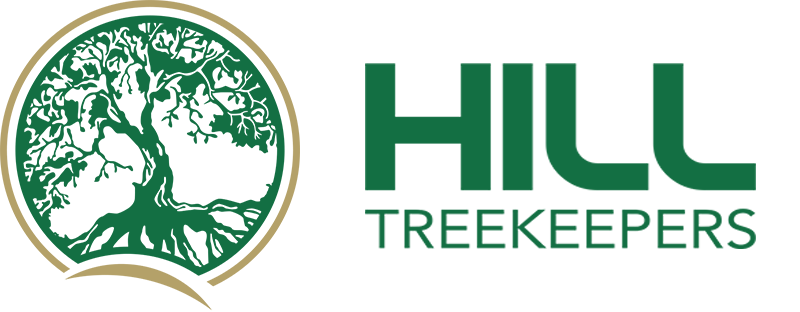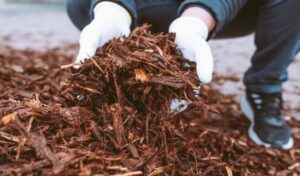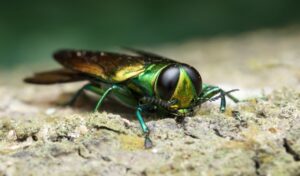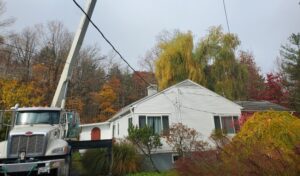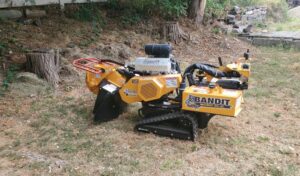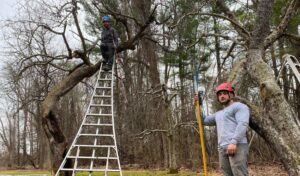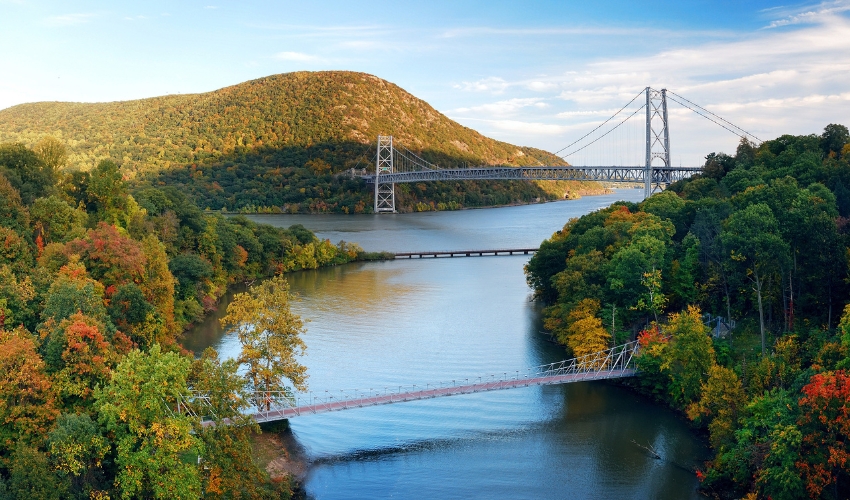
In the Hudson Valley area, we are the envy of the rest of New York with our incredible biodiversity and natural beauty. There are numerous benefits to planting native trees in your yard, and you’ll have plenty to choose from in our area. So why not add more beauty to your yard with the best native trees in the Hudson Valley?
In this article, we will look at some of the best native trees in the Hudson Valley region of New York. We’ll examine the benefits they may bring and any concerns to watch out for when planting trees.
Key Takeaways
- The Hudson Valley is home to many native trees, and most residents live in Hardiness Zones 6 or 7.
- Some common native trees to consider for your yard include black oaks, red maples, shagbark hickories, common serviceberries, alternate-leaved dogwoods, and eastern white pines.
- Native trees are better for the ecology of the Hudson Valley, acting as shelter and food for native species.
- It is generally easier to grow native trees than bring in species that are not indigenous to the region.
Best Native Trees That Will Thrive in Your Hudson Valley Yard
The Hudson Valley is unique in New York. Because of the geographical features of our area, you will see some trees that are not common or native to the rest of the state. The area is not a monolith, however, and the soil type and climate are different in the northern part of the valley in Albany than in the southern part near Yonkers.
For residents in Orange and Dutchess Counties, you’ll find yourself either in Hardiness Zones 6 or 7. It is a similar story in Ulster County, except some residents in the northwest may be in Zone 5. Hardiness Zones give us a general idea of what plants will grow in a specific region based on the extreme temperatures of the area.
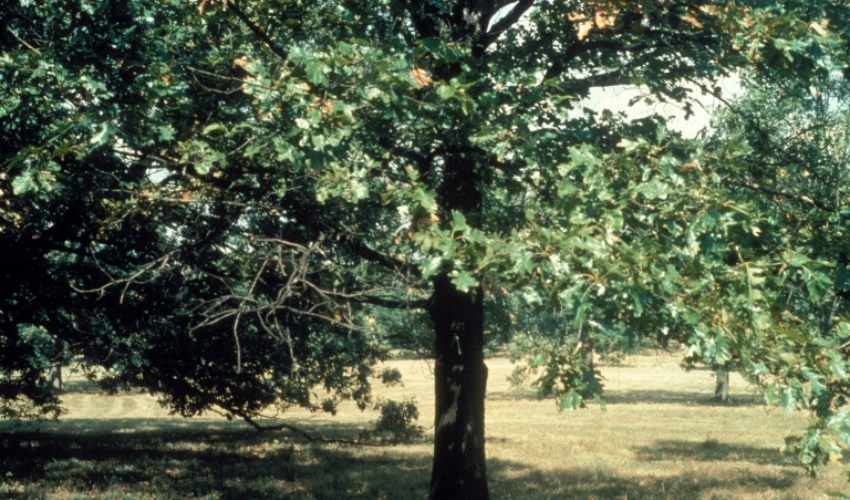
Courtesy of Richard Webb, Bugwood.org
1. The Hudson Valley is One of the Few Places in New York Where Black Oaks Naturally Grow
Black oaks (Quercus velutina) are a key part of many forests in the eastern United States, but it is not particularly widespread in New York. The Hudson Valley is one of the best places to see black oaks in the state.
Black oaks are massive trees by maturity, growing up to 60 feet in height and reaching a mature width of 70 feet. You’ll want to give these trees plenty of room to grow in your yard. They will begin producing acorns after about 10 years to help feed native wildlife in the area. Black oaks also support numerous caterpillar species in our region and you may find yourself with more beautiful butterflies every year after you plant a black oak.
When you plant a black oak, you aren’t just adding a tree for you to enjoy. It is something you will pass on to the next generation, and the generation after that. Black oaks typically last between 150 and 200 years if you properly care for them.
Black oaks are resilient, particularly in their native habitats. However, it is essential to monitor them for potential issues. Oak wilt is always a threat (though it hasn’t been confirmed in our area yet), as the disease has no cure and spreads quickly. Keeping your oak tree stress-free will limit the chance of seeing it decline early.
Black Oak Fast Facts
- Scientific Name: Quercus velutina
- Mature Height: 50-60 feet
- Hardiness Zone Range: Zones 3-9
- Sunlight: Full or partial sun
- Average Lifespan: 150-200 years
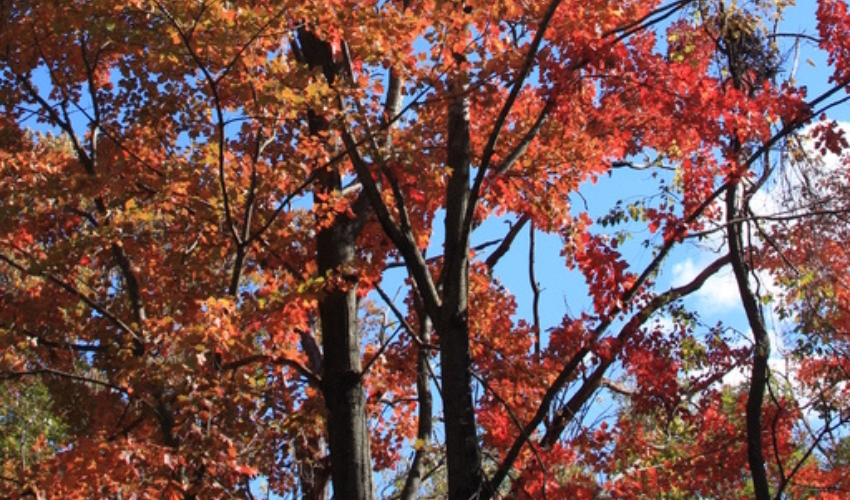
Courtesy of Steven Katovich, Bugwood.org
2. The Red Maple Adds Beauty to Your Property in Fall
Fall is one of the best times to live in the Hudson Valley, with our trees in full autumnal bloom. If you want to add an extra bit of eye-catching appeal in the fall, consider adding a red maple (Acer rubrum) to your landscape.
Red maples are shade trees native across the eastern United States. Because it’s so widespread, it is a very adaptable and strong tree; you won’t have to worry as much about making sure the soil is perfect as you would with other trees. There are several cultivars available, and you can choose if you want the fall leaves to look yellow or red.
Like black oaks, red maples are large and long-lasting. Expect your red maple to last anywhere from 80 to 100 years; some people have reported red maples reaching 200 years old. These trees tend to top at around 60 feet, though you can find small cultivars if you are worried about the tree taking up too much space.
Despite the red maple’s adaptability, it is the target of numerous problems that can plague it. Maple tar spot and maple decline are two of the biggest concerns your trees will have to deal with. Keeping your tree healthy and free from stress will help you avoid some of these problems with your maples.
Red Maple Fast Facts
- Scientific Name: Acer rubrum
- Mature Height: 40-60 feet
- Hardiness Zone Range: Zones 3-9
- Sunlight: Full or partial sun
- Average Lifespan: 80-100 years
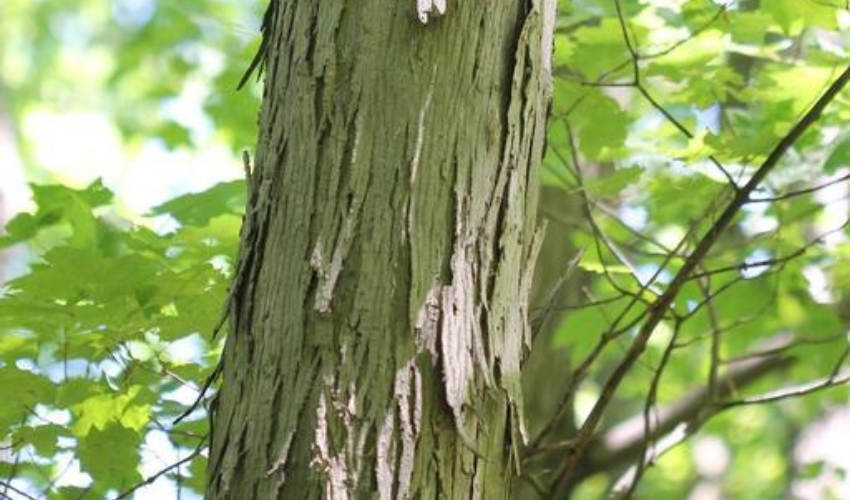
Courtesy of Rob Routledge, Sault College, Bugwood.org
3. Looking for a Long-Lasting and Unique Tree? Try the Shagbark Hickory!
If you want to try something different that will get some eyes to turn to your unique yard, consider planting a tree like the shagbark hickory (Carya ovata). While these trees are native to our region, they have a distinct look that will make you the talk of the town.
The shagbark hickory is easily identifiable by looking at the trunk, as it takes its name from the way the bark looks like it is peeling off the tree. These trees provide plenty of shade for homeowners, growing up to 80 feet at full maturity. With proper care and maintenance, the shabbark hickory will last up to 200 years.
While many trees are under attack from pests and diseases, the shagbark hickory is mostly safe on that front. You won’t have to worry about any major pest infestation or disease outbreak with your shagbark, but proper care is always needed to avoid stress and keep your tree looking beautiful.
If you choose to plant a shagbark hickory, ensure your soil is well-drained and deep, as the tree thrives in these conditions.
Shagbark Hickory Fast Facts
- Scientific Name: Carya ovata
- Mature Height: 60-80 feet
- Hardiness Zone Range: Zones 4-9
- Sunlight: Full or partial sun
- Average Lifespan: 200 years
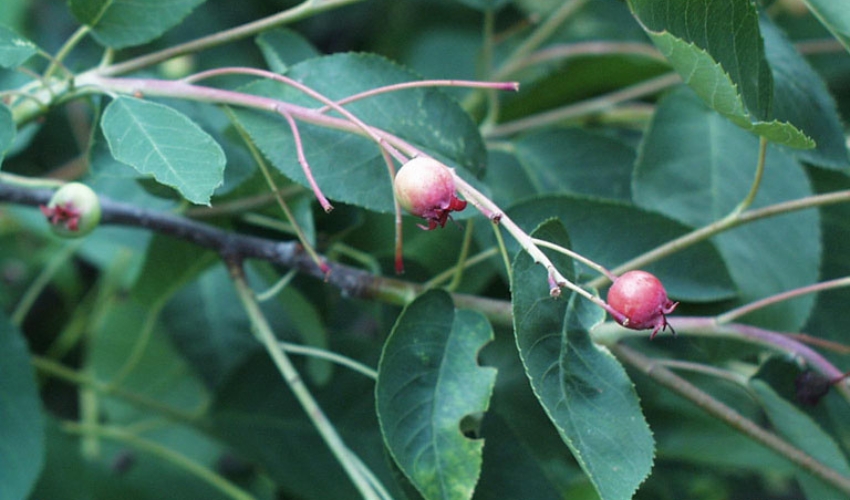
Courtesy of John Ruter, University of Georgia, Bugwood.org
4. The Common Serviceberry Makes a Perfect Ornamental Tree in the Hudson Valley
Have a smaller yard, or are you looking for something a little more compact? Look no further than the common serviceberry (Amelanchier arborea). There are numerous cultivars of this plant ranging in size from ornamental trees to large shrubs. The common serviceberry is a fruit-bearing tree that brings beauty to your yard year-round. In the spring, you will see clusters of white flowers. In the summer, the fruit ripens. Birds are especially fond of the fruit, so you can attract more birds to your yard by planting a serviceberry. Finally, in the autumn, you will see the leaves go from yellow to red before finally dropping for the year.
If you choose to plant a common serviceberry, make sure your soil is well-drained, as these trees thrive in those conditions. Prune them at the right time to get maximum flowering.
Common Serviceberry Fast Facts
- Scientific Name: Amelanchier arborea
- Mature Height: 10-25 feet
- Hardiness Zone Range: Zones 3-9
- Sunlight: Full or partial sun
- Average Lifespan: 30-40 years
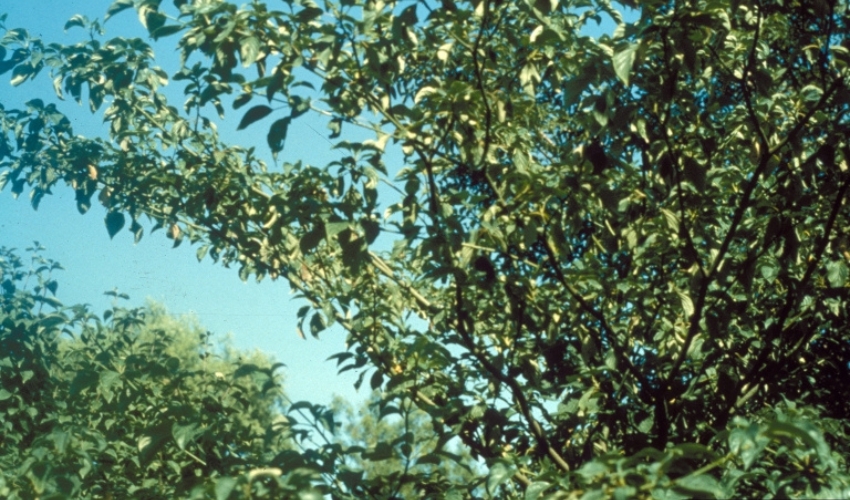
Courtesy of Richard Webb, Bugwood.org
5. Alternate-Leaved Dogwoods Are a Unique Ornamental for Your Yard
Alternate-leaved dogwoods (Cornus alternifolia), a.k.a. pagoda dogwoods, are an excellent choice for native ornamentals in the Hudson Valley. These trees or large shrubs have a unique shape and a size range that make them adaptable to whatever size yard and space you have.
This tree takes its name from the distinct shape its branches form that resemble pagodas in East Asian countries like China and Japan. This unique look will make your dogwood a great conversation point and help set your yard apart from your neighbors.
Alternate-leaved dogwoods attract a range of wildlife from water birds, pollinators, songbirds, game birds, butterflies, and small mammals. This will help give your yard a more natural vibe and benefit our local wildlife.
You will want to plant this tree in slightly acidic and well-drained soil. While this species is generally safe from major tree diseases, keep a lookout for minor leaf infections and golden stem canker. If you consistently see deer on your property, opt for a more deer-resistant cultivar.
Alternate-Leaved Dogwood Fast Facts
- Scientific Name: Cornus alternifolia
- Mature Height: 8-25 feet
- Hardiness Zone Range: Zones 3-7
- Sunlight: Full to partial sun
- Average Lifespan: 20 years
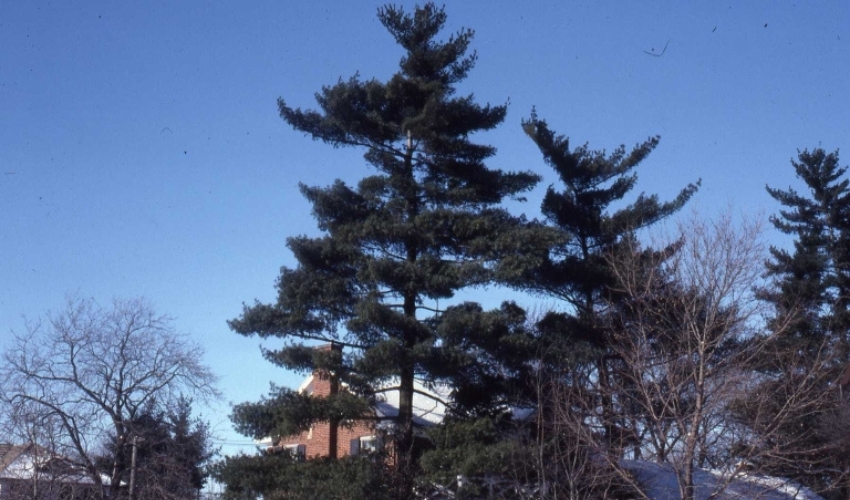
Courtesy of Richard Webb, Bugwood.org
Choose an Eastern White Pine to Add Some Evergreen Flair to Your Yard
When winter comes, you’ll see yards across the Hudson Valley looking barren. However, with an evergreen tree on your property, you can enjoy some greenery all year long. While there are many types of evergreens to consider, we suggest looking into the eastern white pine (pinus strobus).
Planting a tree can feel somewhat disappointing for those of us who prefer instant gratification. While no tree will reach maturity immediately, the eastern white pine is a fast-growing tree, so you will be able to enjoy its benefits sooner than with some other evergreen and deciduous species.
Eastern white pines are generally quite hardy once established, and they are easy to grow. If you haven’t had much experience growing trees, this may be a good starter tree. The eastern white pine also attracts wildlife like rabbits, red squirrels, and various species of birds. If you choose to plant an eastern pine, opt for the proper season in fall or spring. Avoid planting this tree if you live in a place with heavy clay soil.
Eastern White Pine Fast Facts
- Scientific Name: Pinus strobus
- Mature Height: 50-80 feet
- Hardiness Zone Range: Zones 3-7
- Sunlight: Full to partial sun
- Average Lifespan: 200 years
Benefits of Planting Native Trees in Your Yard
Native trees have numerous benefits for you and your yard. If you can, try to plant as many native plants as possible to reap the benefits, such as:
- Helping the ecosystem: Native plants typically provide food and shelter for much of our local wildlife here. You’ll not only be attracting more beautiful birds or butterflies to your yard but also be helping care for nature in the process.
- Non-invasive: Some people plant trees in their yard without realizing they are invasive species. These plants may propagate themselves too much with no natural counters. And if they spread too far, they may muscle out other trees in our area. Native trees are not invasive and have natural counters to prevent them from growing too large or wide.
- Higher survivability: While trees may seem invincible, they are often quite sensitive to the environment. Non-native trees may not be suited for the climate or soil of the Hudson Valley. This is why we recommend planting native trees, as you know they will be able to more easily thrive in your landscape.
- Less care: Native trees are used to the soil in the Hudson Valley, and thus, require less maintenance to keep them healthy. Less fertilizer and watering will make things easier for you when caring for the tree and avoiding any potential environmental damage.
Hill Treekeepers Can Help with Your Hudson Valley Trees
When you have the choice, always try to plant native trees in the Hudson Valley. Trees such as the eastern white pine, common serviceberry, shagbark hickory, pagoda dogwood, black oak, or red maple will make wonderful additions to your yard, and are some of the best native trees in our neighborhood. They are easier to care for and better for the ecology of your neighborhood.
If your trees are not looking their best and you need a professional to assist you, our team at Hill Treekeepers can help. Our arborists can diagnose problems with your trees and develop treatment programs to nurse them back to health. Call us at 914-214-7045 or request a quote to get the process started and work toward helping your trees.
Share this online!
Get the highest quality of tree services for residential and commercial properties in the Hudson Valley area. We look forward to working with you!
TOPICS
Recent Articles
Don't Miss the Next Update!
Join the thousands of smart Hudson Valley residents who get the monthly newsletter from Hill Treekeepers. It's full of helpful information you won't want to miss!
